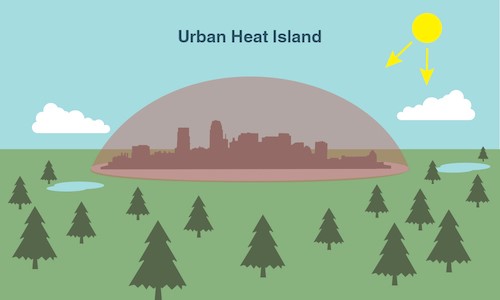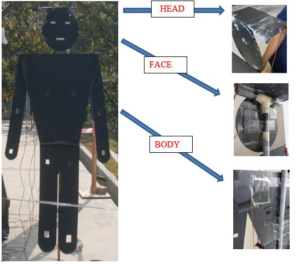Urbanisation and industrialisation improve our material lives and comfort, But do you know they also induce other problems for human beings, such as global warming, industrial waste, and air pollution? The most important challenge impacting the urban environment and making cities unsustainable is the heat-related issue known as urban heat islands (UHI). An urban heat island occurs when a city experiences warmer temperatures than nearby rural areas.
Why does UHI happen?
This phenomenon is mainly related to the albedo effect of the buildings and urban structures that significantly absorb solar radiation, the lack of green spaces, the characteristics of urban canyons, and anthropogenic heat generation. Outdoor thermal comfort is the combination effect of solar intensity and heat envelope. During the last decade, interest in thermal comfort assessment has increased because of climate changes and increased heat stress in cities. The microclimatic analysis of an urban space must consider conditions such as solar incidence and radiation exchanges, local characteristics of winds, topography, vegetation and the presence of water (moisture in the air).

Do you know UHI causes heat stroke?
The danger of heat stroke has always accompanied the non-acclimatised people through selected zones. Heat stroke is a life-threatening illness characterised by an elevated core body temperature that rises above 40 degrees Celcius and that is accompanied by hot, dry skin and central nervous system dysfunction that results in delirium, convulsion or coma. Heat stroke is often fatal, and those who do survive may sustain permanent neurologic damage. In the current study, most researchers and scientists dealt with the thermal sensation questionnaire survey and measurement of meteorological variables to determine the thermal discomfort level in environments and human thermal responses in the hot and humid context of Malaysia.
What is the Current Research Direction?
Therefore, in combination with these mitigation efforts, thermal manikin instrumentation can be handy as a human simulation model to investigate the occurrence of UHI and evaluate thermal comfort in microclimate conditions. Thermal manikin is a passive operation tool that can simulate human sweating, provide valuable information about evaporation heat exchange and predict human thermal responses. It has been used for indoor and outdoor environment measurement to create a better and more realistic human body simulation. Since the development of thermal manikin is getting more attention, it is possible to include the combination of human factors, such as the physiological mechanism of thermoregulation by fabricating thermal manikin, thermal sensation by questionnaire survey and meteorological data by quantitative field studies with the thermal comfort indexes like discomfort index, Physiological Equivalent Temperature (PET) and Predicted Mean Vote (PMV) to evaluate human thermal comfort in outdoor environment precisely.
New Innovation towards Thermal Comfort from University Teknologi Malaysia (UTM)
A team of researchers in UTM has developed a new invention to evaluate human thermal comfort using “simplified thermal manikin”. A black thermal manikin called “simplified thermal manikin” is black plastic corrugated cardboard made from polypropylene with a stand at the back to support the parts of the head, face and body. The simplified thermal manikin is placed outdoors and exposed to the surrounding environment. It should be clarified that the simplified thermal manikin model discussed here is not a physiological model of human body, but to serve as a useful tool for evaluating thermal load due to the effect of UHI. Principally, the UHI impacts on the fabricated simplified manikin where the factors were measured from the heated thermal environment, such as heat emitted from urban structures, direct solar radiation, and anthropogenic heat, can be identified through the temperature variation at manikin. The temperature variation at the simplified thermal manikin is a useful indicator for determining the amount of heat storage affected by the different surrounding environments, which is the new mechanism in translating thermal index based on thermal sensation, PET and PMV for future works.






